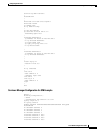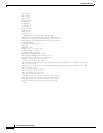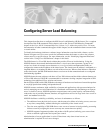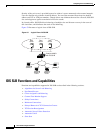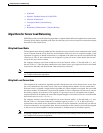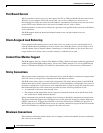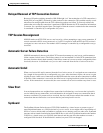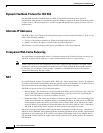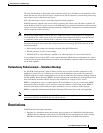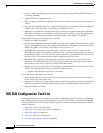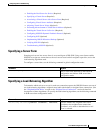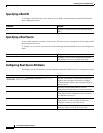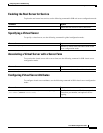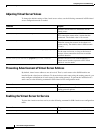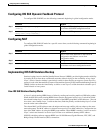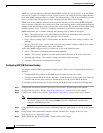
Configuring Server Load Balancing
Restrictions
IPC-139
Cisco IOS IP Configuration Guide
The main disadvantage of dispatched mode is that the virtual server IP address is not modified, which
means that the real servers must be Layer 2 adjacent with the load balancer or intervening routers may
not be able to route to the chosen real server.
NAT (directed mode) is used to solve these dispatched mode problems.
IOS SLB currently supports only server NAT. By replacing the virtual server IP address with the real
server IP address (and vice versa), servers can be many hops away from the load balancer and intervening
routers can route to them without requiring tunneling. Additionally, loopback and secondary interfaces
need no longer be on the real server.
Note On the Catalyst 6000 family switches and Cisco 7200 series routers, if an IP address is configured as
a real IP address for a NAT virtual server, you cannot balance connection requests from that address
to a different virtual server (whether NAT or dispatch) on the same load balancer.
The network designer must ensure that outbound packets travel through IOS SLB using one of the
following methods:
• Direct wiring (all packets flow through a branch office IOS SLB device)
• Default gateways or policy-based routing
• IOS SLB NAT of client addresses, enabled as an outbound feature on server-side interfaces
A less common form of server NAT is server port translation, which involves replacement of a virtual
server port. Server port translation does not require server IP address translation, but the two translations
can be used together.
Redundancy Enhancement—Stateless Backup
An IOS SLB could represent a point of failure and the servers could lose their connections to the
backbone if power fails, or if a link from a switch to the distribution-layer switch is disconnected.
IOS SLB supports a stateless backup option you can use to reduce that risk. Stateless backup, based on
the Hot Standby Router Protocol (HSRP), provides high network availability by routing IP flows from
hosts on Ethernet networks without relying on the availability of a single Layer 3 switch.
HSRP is configured on Layer 3 switches that run IP over Ethernet. If a Layer 3 switch fails, HSRP
automatically allows another Layer 3 switch to assume the function of the failing switch. HSRP is
therefore particularly useful when you require continuous access to resources in the network.
HSRP is compatible with Internetwork Packet Exchange (IPX) from Novell and with AppleTalk.
Note To avoid any single point of failure in an IOS SLB network, use multiple Layer 2 switches to provide
connectivity between the IOS SLB devices and the servers.
Restrictions
IOS SLB has the following restrictions:
• Operates in a standalone mode and currently does not operate as a MultiNode Load Balancing
(MNLB) Services Manager. The presence of IOS SLB does not preclude the use of the existing
MNLB Forwarding Agent with an external Services Manager in an MNLB environment.



